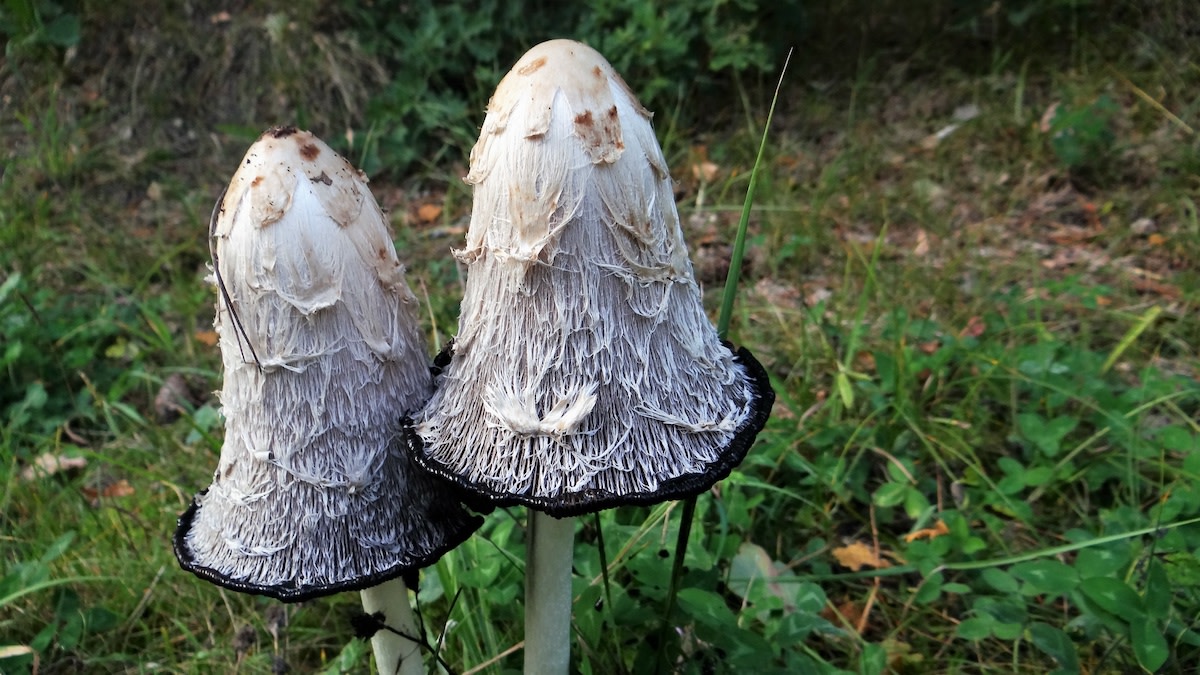Inky Cap Mushroom Foraging: How to Eat Ink Cap Mushrooms
Written by MasterClass
Last updated: Apr 25, 2022 • 3 min read
Inky cap mushrooms might look odd and unappealing, but they are a healthy survival food that keeps you energized in the field. Read on to learn how to identify and prepare these edible mushrooms.
Learn From the Best
What Are Inky Cap Mushrooms?
The bell-shaped fungus Coprinopsis atramentaria goes by more common names, including tippler’s bane, inky cap, or common ink cap mushroom. Ink cap mushrooms are a close relative of Coprinopsis comatus, also known as the lawyer’s wig, the shaggy ink cap, or the shaggy mane mushroom.
These edible mushrooms are endemic to Europe and North America, where people can harvest them in environments near buried wood, rotten stumps, and roadsides. Their taste ranges from mild to bitter, and they have a metallic smell and an often cheese-like texture.
Are Inky Cap Mushrooms Edible?
Inky cap mushrooms are edible, and they can make a nutrient-dense survival food in a pinch. The average shelf life of these fungi is approximately twenty-four hours, so you might opt for longer-lasting mushroom varieties if you require sustenance. Adult caps break down through autodigestion, meaning foraged caps quickly transform into an ink-like consistency if you do not prepare them within the day.
Avoid combining inky cap mushrooms with alcohol consumption since this causes a chemical reaction that turns these typically safe fungi into poisonous mushrooms.
3 Identifying Features of Inky Cap Mushrooms
Learn these common physical characteristics of edible inky cap mushrooms to confirm you have foraged edible mushrooms and avoid consuming any dangerous look-alikes:
- 1. Dark spore print: Fungi in the Psathyrellaceae wild mushroom family produce a black liquid during autodigestion. A hydrolytic enzyme breaks down the mushroom’s body, and this black goo, or spore print, carries the male reproductive seeds. As the mushroom undergoes this liquefaction process, it feeds new, growing mushrooms.
- 2. Hollow stipe: A long, thin, hollow stipe, or stem, holds each inky mushroom cap vertically.
- 3. Lightly colored toadstools: Like Agaricus bisporus mushrooms, inky cap mushrooms have large, pale, fruiting bodies or caps with a hairy or scaly texture.
How to Prepare Inky Cap Mushrooms for Consumption
Consider these techniques to prepare the Coprinellus micaceus species and other inky cap mushrooms to supplement your nutrition in a survival scenario:
- Brew an inky cap mushroom tea. Soak the mushrooms in hot water to make a drink that can help you regulate your blood glucose levels since inky cap mushrooms contain a natural compound that mimics the effects of insulin. Additionally, drinking a warm beverage can help you to relax and to lessen the release of stress hormones. This, in turn, can help you sleep better and avoid fatigue in the wilderness.
- Eat inky cap mushrooms raw. If you are on the move and unable to set up camp, you can choose to eat these edible mushrooms as you travel. Inky cap mushrooms can provide your body with a few grams of protein for sustenance plus carbohydrates for quick energy while you work.
- Fry inky cap mushrooms in a pan. Frying inky mushroom caps can add substance to a foraged salad or improve the nutritional value of a small-game meat dish in the wild. You might wish to boil or remove any sections of the mushroom that have started to autodigest, as these broken-down areas can produce an unappetizing smell, flavor, and texture.
Preparing for Wilderness Expeditions
Certain outdoor activities carry an elevated risk of serious injury. Wilderness scenarios require extensive survival gear, including but not limited to food, water, maps, protective clothing, and first aid, along with mental and physical fortitude. This article is for educational and informational purposes and is not a substitute for hard skills and expertise.
Ready to Explore More of the Great Outdoors?
Prepare for any outdoor journey by grabbing a MasterClass Annual Membership and committing Jessie Krebs’s wilderness survival course to memory. As a former United States Air Force Survival, Evasion, Resistance, and Escape instructor, Jessie can teach you everything you need to know about packing for a trip (neon is the new black), purifying water, foraging (crickets: the other white meat), starting a fire, and signaling for help (forget SOS).
